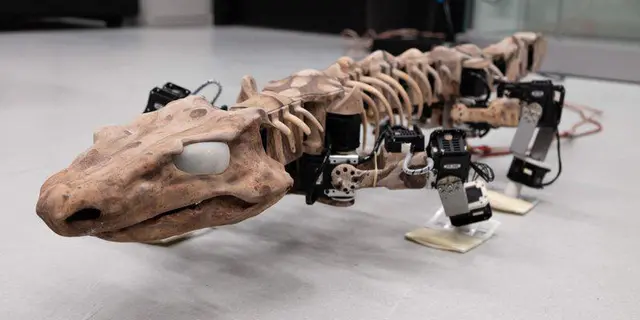Japan on Wednesday launched an unmanned cargo transfer spacecraft that will deliver much-needed supplies to the International Space Station (ISS) following recent failures to send U.S. and Russian cargo craft to the ISS.
The Japan Aerospace Exploration Agency (JAXA) and Mitsubishi Heavy Industries, Ltd. -- Japan's space agency and the commercial operator of H-2B rocket -- launched the H-2 Transfer Vehicle " KOUNOTORI5" (HTV5) aboard the H-2B Launch Vehicle No.5 at 8:50 p.m. (1150 GMT) on Wednesday from JAXA's Tanegashima Space Center in Japan's southwestern Kagoshima prefecture.
The launch vehicle flew smoothly, and at about 15 minutes after liftoff, the separation of the HTV5 and the rocket was confirmed. Then, the HTV5 was inserted into the planned initial orbit. "The KOUNOTORI5 has successfully established communications with the NASA's TDRS (Tracking & Data Relay Satellite)," announced JAXA. The HTV will gradually approach the ISS and berth at the ISS on Aug. 24, said JAXA.
The launch was originally scheduled for Aug. 16, but was delayed twice due to unfavorable weather conditions.
JAXA astronaut Kimiya Yui, a flight engineer for Expedition 44 and 45 aboard the ISS, has been assigned to manipulate the Space Station Remote Manipulator System (SSRMS) for the operation of capturing Kounotori5. "It is the first time for Japanese astronauts to capture the HTV," said JAXA.
According to JAXA, the uncrewed supply ship will reach the space station at around 8 p.m. (1100 GMT) on Aug. 24. Kimiya Yui will use a robotic arm to dock the transporter with the ISS for cargo off-loading.
Developed and built in Japan, the HTV5 known as "KOUNOTORI ( white stork)" is an unmanned cargo transfer spacecraft that delivers supplies to the ISS. The can-shaped vessel has a length of 9.8 meters and diameter of about 4.4 meters. HTV will deliver not only necessary daily commodities for the crew astronauts, but also experimental devices, samples, spare parts and other necessary research items to the ISS in orbit at an altitude of about 400 km and return with spent equipment, used clothing, and other waste material.
Currently, Japan, the United States, and Russia operate cargo transfers to the ISS. "Among the supply vehicles, KOUNOTORI serves as the backbone of ISS operations with its world-leading supply capacity of approx. 6 metric tons, and is the only space liner capable of delivering large items of hardware," said JAXA.
Wednesday's liftoff has been the fifth flight of HTV since the first Kounotori vehicle was launched in September 2009 with 4.5 metric tons of supplies for the ISS. The HTV5 delivers a total 5.5 metric tons of cargo to the ISS. Japan's last resupply flight to the ISS was made by HTV4 in August 2013, delivering 5.4 metric tons of cargo to the ISS.
By improving the way of loading of cargo, the HTV's loading capacity has gradually been increased. "The amount of loadable cargo of HTV5 has been increased up to 242 Cargo Transfer Bags ( CTBs) as compared to 208 CTBs during HTV1 mission, which is the increase of 34 bags and about 15 percent," said JAXA. "This allows the HTV to accommodate more packages such as water and system parts."
Japan wants to make continuous launches with at least four more HTV missions, according to media reports. The next Kounotori spacecraft, HTV6 is planned to be launched in 2016.
Earlier this year, Japan launched a backup information gathering satellite (IGS) with a radar reconnaissance payload and an IGS with an optical reconnaissance payload in February and March, separately.
 简体中文
简体中文



